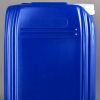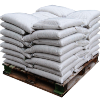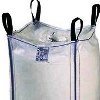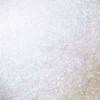| Anmol Chemicals is the pioneer manufacturers of Malic Acid, Pharmaceutical Excipients Food & Flavor chemicals in India. We offer Halal and Kosher Malic Acid made in an ISO9001, ISO22000 (FSSC22000) cGMP and GLP certified facility. Our group has several manufacturing facilities spread across the world, supported by toll manufacturers and representatives in UAE, Europe, Africa, USA, China and has several associated manufacturing facilities spread across India. All the Information on Physics, Chemistry, Applications, Uses and Technology on Manufacture of Malic Acid is in these pages. |
| The units in the group have one or more of the certifications like FDA GMP, ISO 9001, ISO 22000, HACCP, REACH, Kosher & Halal and DMF support is available. |





Mailc Acid USP BP FCC Food Grade and Commercial Pure Grade Manufacturers
Malic acid GHS SDS, Material Safety Data sheet
Malic Acid
USP BP FCC Food grade & Pure

Malic Acid BP Grade Ph Eur
C4H6O5 --- 134.1 --- 6915-15-7; 617-48-1
Action and use: Excipient.
DEFINITION
(2RS)-2-Hydroxybutanedioic acid.
Content: 99.0 per cent to 101.0 per cent (anhydrous substance).
CHARACTERS
Appearance: White or almost white, crystalline powder.
Solubility: Freely soluble in water and in alcohol, sparingly soluble in acetone.
IDENTIFICATION
A. Melting point: 128°C to 132°C.
B. Infrared absorption spectrophotometry.
TESTS
Solution S: Dissolve 5.00 g in water R and dilute to 25 ml with the same solvent.
Appearance of solution: Solution S is clear and colourless.
Optical rotation: - 0.10° to + 0.10°, determined on solution S.
Water-insoluble substances: Maximum 0.1 per cent.
Related substances
Liquid chromatography (2.2.29).
Limits: (Please see the original monograph)
impurity A: not more than twice the area of the corresponding peak in the chromatogram obtained with reference solution (b) (1.0 per cent);
impurity B: not more than 0.25 times the area of the corresponding peak in the chromatogram obtained with reference solution (b) (0.05 per cent);
any other impurity: for each impurity, not more than 0.5 times the area of the peak due to impurity B in the chromatogram obtained with reference solution (b) (0.1 per cent);
total of other impurities: not more than 2.5 times the area of the peak due to impurity B in the chromatogram obtained with reference solution (b) (0.5 per cent);
disregard limit: 0.1 times the area of the peak due to impurity B in the chromatogram obtained with reference solution (b) (0.02 per cent).
Heavy metals: Maximum 20 ppm.
Water: Maximum 2.0 per cent, determined on 1.00 g.
Sulphated ash: Maximum 0.1 per cent, determined on 1.0 g.
ASSAY
Dissolve 0.500 g in 50 ml of carbon dioxide-free water R. Titrate with 1 M sodium hydroxide determining the end-point potentiometrically. 1 ml of 1 M sodium hydroxide is equivalent to 67.05 mg of C4H6O5.
IMPURITIES
Specified impurities A, B. (Please see the original monograph)
R' --- COOH --- R
A. R = CO2H, R' = H: (E)-butenedioic acid (fumaric acid),
B. R = H, R' = CO2H: (Z)-butenedioic acid (maleic acid).
Malic Acid USP Grade
C4H6O5 134.09
Hydroxybutanedioic acid, (±)-.
(±)-Hydroxysuccinic acid [617-48-1].
Malic Acid contains not less than 99.0 percent and not more than 100.5 percent of C4H6O5.
Identification: Infrared Absorption 197K , on un-dried specimen.
Residue on ignition: not more than 0.1%.
Water-insoluble substances: Dissolve 25 g in 100 mL of water, filter the solution through a tared filtering crucible, wash the filter with hot water, and dry at 100 to constant weight: the increase in weight is not more than 25 mg (0.1%).
Heavy metals: 0.002%.
Fumaric and maleic acids: To pass the test. Not more than 1.0% of fumaric acid and not more than 0.05% of maleic acid are found.
Organic volatile impurities: meets the requirements.
Assay: Transfer about 2 g of Malic Acid, accurately weighed, to a conical flask, dissolve in 40 mL of recently boiled and cooled water, add phenolphthalein TS, and titrate with 1 N sodium hydroxide VS to the first appearance of a faint pink color that persists for not less than 30 seconds. Each mL of 1 N sodium hydroxide is equivalent to 67.04 mg of C4H6O5.
Malic Acid FCC Food Grade
DL-Malic Acid; Hydroxysuccinic Acid;
2-Hydroxybutanedioic Acid
C4H6O5 Formula wt 134.09
INS: 296 CAS: [617-48-1]
DESCRIPTION
Malic Acid occurs as a white or nearly white, crystalline powder or granules having a strongly acid taste. One gram dissolves in 0.8 mL of water and in 1.4 mL of alcohol. Its solutions are optically inactive. It melts at about 130°C.
Function: Acidifier; flavoring agent.
REQUIREMENTS
Identification: The infrared absorption spectrum of a neat dispersion of the sample between two potassium bromide plates exhibits maxima only at the same wavelengths as those of a similar preparation of USP Malic Acid Reference Standard.
Assay: Not less than 99.0% and not more than 100.5% of C4H6O5.
Fumaric Acid: Not more than 1.0%.
Lead: Not more than 2 mg/kg.
Maleic Acid: Not more than 0.05%.
Optical (Specific) Rotation [α]25°/D: Between −0.10° and +0.10°.
Residue on Ignition: Not more than 0.1%.
Water-Insoluble Matter: Not more than 0.1%.
We can offer malic acid in well defined crystal size (say 20-60 mesh) and as powder of say 200 mesh size.
For Original Monographs of Malic Acid please check with the web-pages of the Pharmacopoeia.
Malic Acid Manufacturers
Anmol Chemicals
S-8, SARIFA MANSION, 2ND FLANK ROAD, CHINCHBUNDER, MUMBAI 400009, INDIA
TEL: (OFFICE) 91-22-23770100, 23726950, 23774610, 23723564. FAX: 91-22-23728264
e-mail: anmolc@mtnl.net.in

Fracture Diverting Agent, Ferric Chloride Hexahydrate, Malic Acid, Skatole & Indole, Potassium Bicarbonate & Carbonate, Sodium Caprylate, Steartic Acid, Tartartric Acid
Exports to USA, Canada, UAE, Dubai, South Africa, Tanzania, Kenya, Nigeria, Egypt, Uganda, Turkey, Mexico, Brazil, Chile, Argentina, Europe Netherlands, Italy, Spain, Germany, Portugal, France, Malaysia, Indonesia, Thailand, Norway, Korea, Japan, etc.
Copyright and Usual Disclaimer is Applicable